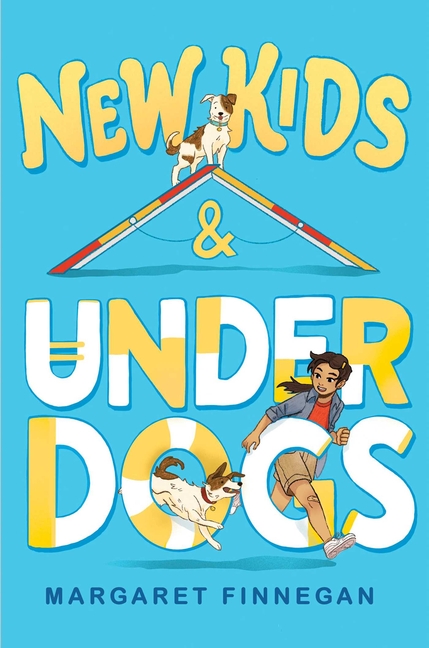From Teaching to Writing

TeachingBooks asks each author or illustrator to reflect on their journey from teaching to writing. Enjoy the following from Margaret Finnegan.
Things Did Not Go According to Plan
I was supposed to get my Ph.D. in six years, segue into a tenure-track job, have children who were like me but better, get tenure, and live out the rest of my days beloved and respected by all. That was the plan. In that order.
I started strong. I graduated Phi Beta Kappa. I wrote bank brochures for two years so I could pay for graduate school. I got into an excellent history PhD program, and I finished my degree in a timely fashion with a book contract in hand and several years of teaching experience.
Then, I couldn’t find a job. It felt very personal, but it wasn’t. Hardly anyone was getting a tenure-track job back then—at least in history. When my cohort and I started out, the predictions had been rosy. The baby boomers would all retire. Colleges and universities would replace them with us.
It didn’t happen.
Schools replaced them with untenured lecturers instead. In some places, upwards of 75% of all college instructors are now lecturers.
Then I had a difficult pregnancy and was on bedrest for three months. And then the same thing happened two years later. And then my oldest daughter developed epilepsy. Already shamed by how my career had not panned out, I was also now also wracked with worry for my daughter. I started having panic attacks.
It was soon after that that I started teaching again. It wasn’t even history. It was a class at a nearby university. It was for students who’d failed a compulsory, institution-wide writing exam. I was supposed to teach them to write essays. But most of them landed there not because they couldn’t write, but because, as non-native English speakers, their verb tenses fell apart in high-stakes, timed writing scenarios. Honestly, it was a stupid test.
But I was grateful for that class. You can’t dwell on your own problems when you’re teaching. You must be fully present, and—oh, my gosh—it felt so good. Finally! I was not trapped in the bubble of my own drama.
But teaching any class would have given me that gift. Teaching this class did something more. It showed me that life was about picking yourself up when your plans fall apart. In their essays, my students wrote about traumatic experiences with war, loss, poverty, violence, discrimination, illness. And, yet, here they were, in college, in the last class they probably ever wanted to take, moving forward.
Do you know that when you are reading about someone doing something, the same part of your brain lights up as when you are doing the thing yourself? When you read about someone falling, your brain responds as if it is falling, and thus you develop empathy for those who fall. But it works the other way too. When you read about someone picking themselves back up, your brain responds like it’s picking itself back it. Sometimes, that’s the baby step you need to get going again.
That’s what happened to me. When I read all those stories by all those students, my brain lit up at every tale of hardship and every tale of resilience. Even before I could find a way out of my own heartbreak, my brain—through reading—was lighting my path.
I know it sounds corny but teaching that class really did change my life. It helped me reimagine who I could be and where I could go. It taught me that I’m not here to be the star of the show. I’m here to do what my students did for me. I’m here to help people see past themselves and to move forward with their lives with empathy and kindness. That’s why I teach. That’s why I write.
Somehow or another, all my middle grade novels deal with these themes. They are about kids struggling to see past themselves so that they can better connect with others. In We Could Be Heroes, that struggle is compounded by the main character’s autism. In Susie B. Won’t Back Down, it’s complicated by grandiose dreams of achievement and recognition. And in my latest book, New Kids & Underdogs, it’s anxiety and the fear of judgment that keep perennial new kid Robyn Kellen from making friends and being true to herself.
This theme matters to me because I’ve learned that the path forward is never the path that builds walls of isolation. The path forward is always the one that builds connection, and the best way to build a connection is through a story. It’s brain science. It’s what we do as teachers. It’s one of the reasons we matter so much.
Books and Resources

TeachingBooks personalizes connections to books and authors. Enjoy the following on Margaret Finnegan and the books she’s created.
Listen to Margaret Finnegan talking with TeachingBooks about the backstory for writing New Kids and Underdogs. You can click the player below or experience the recording on TeachingBooks, where you can read along as you listen, and also translate the text to another language.
- Explore the Discussion Guide for New Kids and Underdogs
- Discover Margaret Finnegan’s page and books on TeachingBooks
- Visit Margaret Finnegan on her website, Twitter, Instagram, Facebook, YouTube, and GoodReads.
Explore all of the For Teachers, By Teachers blog posts.
Special thanks to Margaret Finnegan, Simon & Schuster, and Blue Slip Media for their support of this post. All text and images are courtesy of Margaret Finnegan and Simon & Schuster, and may not be used without expressed written consent.



Leave a Reply